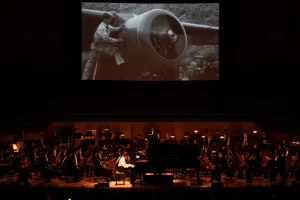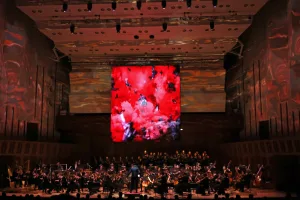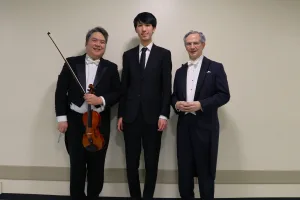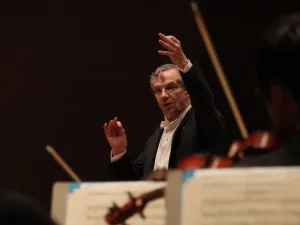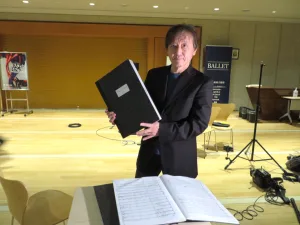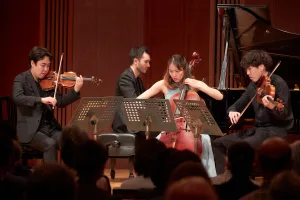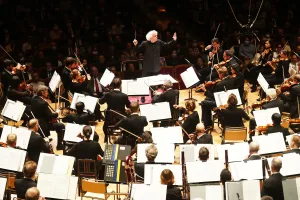Rattle, Stepping Towards Maestro, Resonates the Essence of the Work with Depth
BY Kiwami Miyajima
Simon Rattle led the prestigious Bayerisches Rundfunk Symphonieorchester des Bayerischen Rundfunks (BRSO), of which he is the chief conductor, to Japan for its first day of performances in Tokyo at Suntory Hall on November 26th Wednesday.

The first piece was Brahms’ Piano Concerto No. 2, featuring the world-renowned pianist Seong-Jin Cho, who is from South Korea. The BRSO, which featured a 14-string orchestra, sounded thick and rich, with Cho’s clear touch. Cho, on the other hand, had a powerful sound with a clear touch and engaged in a robust dialogue with the orchestra. Rattle often suppressed the volume of the orchestra toward the end of the third movement, but the beauty of the grain in Cho’s weak notes was remarkable. To the thunderous applause, Cho encored with “Warum?” (Why?) from Schumann’s Fantasy Pieces.
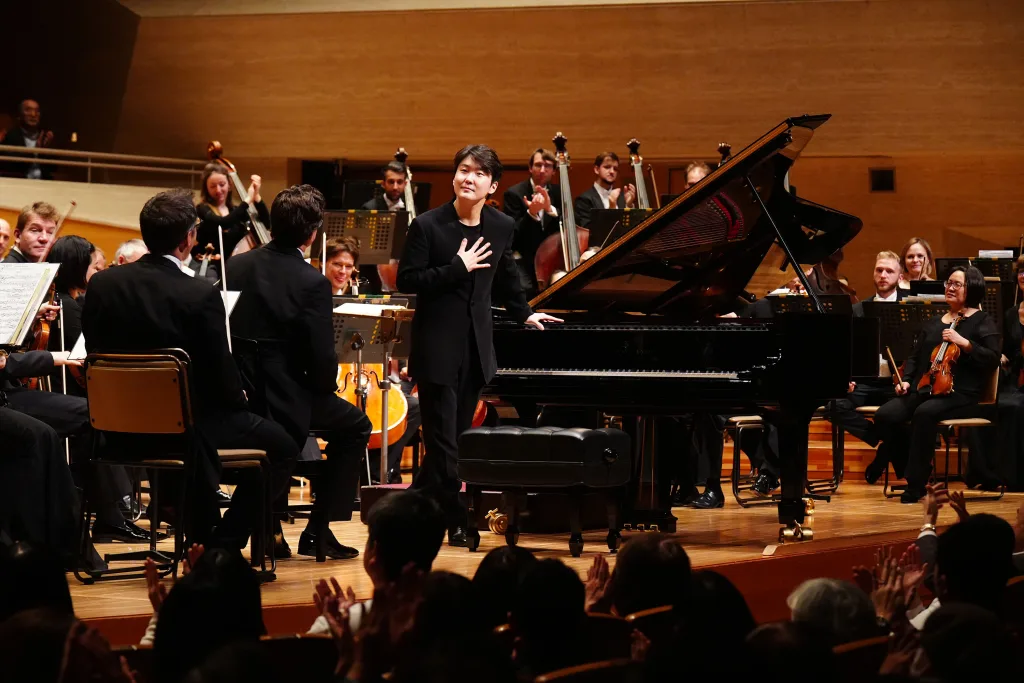
The second half was Brahms’ Symphony No. 2. Strings were increased to 16 types. As in the first half, the violins were placed in opposition. The second half was Brahms’ Symphony No. 2. Strings were increased to 16 types. As in the first half, the violins were placed in opposition. From the beginning of the first movement, the entire hall was filled with profound harmonies that fostered the bright atmosphere of D major. The sound was clearly different from that of the Berlin Philharmonic and the Staatskapelle Dresden, both of which are also prestigious German ensembles. As was the case with Mariss Jansons, the BRSO has a warm and thick sound, and Rattle seemed to respect these qualities of the orchestra to the utmost.
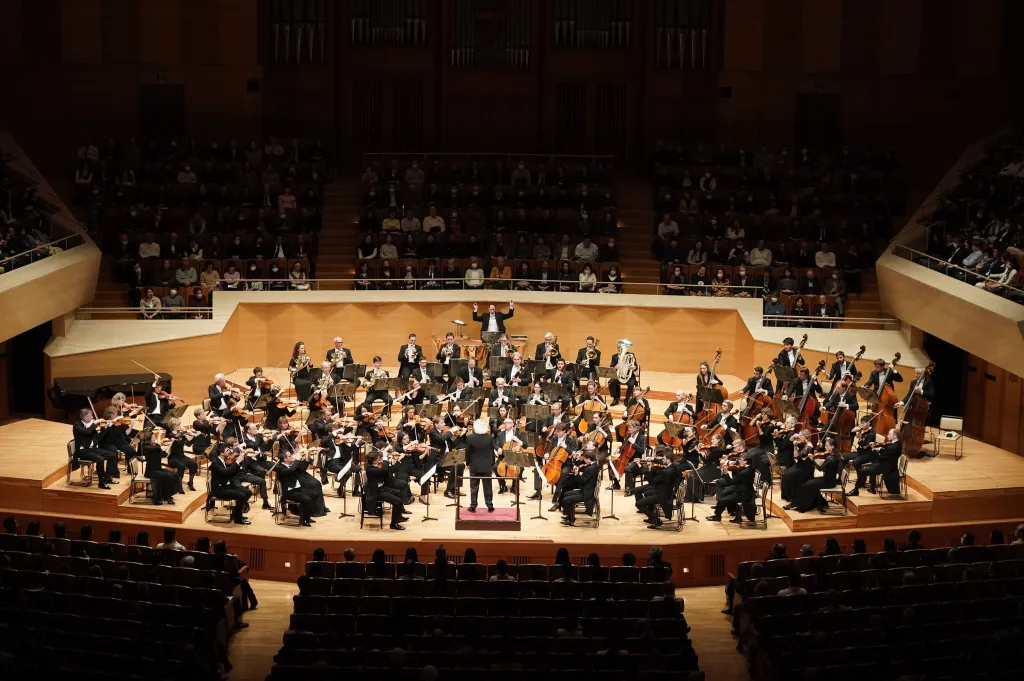
Compared to the performance of the same piece with the Berlin Philharmonic, Rattle’s approach to the work seemed to have changed to a more orthodox direction. The sharp “Rattle style” of accentuating the beginning of a passage or shining a light on the inner voices that was once seen in the past has disappeared. While the sharpness of the style has diminished, the stature of the music has increased, and he seems to have taken the next step toward becoming a master. The only glimpse of the old “Rattle style” could be heard in the beginning of the fourth movement, when the volume was reduced to the utmost limit to allow the audience to hear the fine ensemble work. In the coda of the last movement, Rattle did not unnecessarily agitate the orchestra, but built an imposing finale to close the concert.
To the thunderous applause, Rattle said in Japanese, “Thank you very much, everyone. We will now play Brahms’ Hungarian Dances,” and encored with Brahms’ Hungarian Dances No. 3. The applause did not stop, and Rattle reappeared on stage after the orchestra had left the stage to answer the cheers.
(The audience was very excited and applauded the performance.)
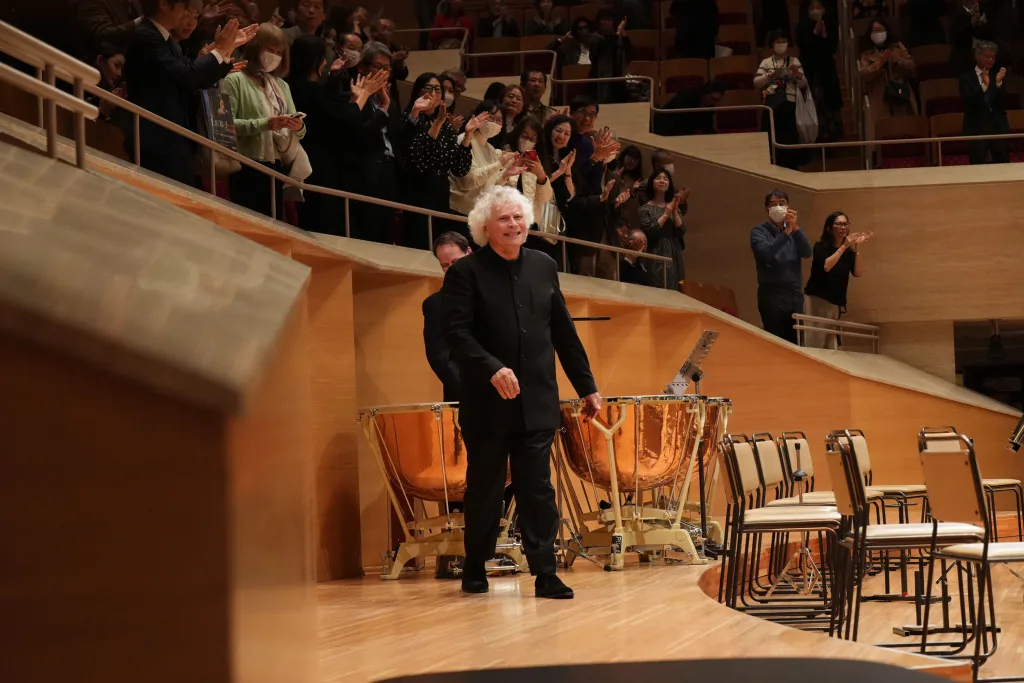
Performance Data
Bayerisches Rundfunk Symphonieorchester Tokyo
November 26 (Tuesday) 19:00 at Suntory Hall
Conductor: Simon Rattle
Piano: Seong-Jin Cho
Orchestra: Bavarian Radio Symphony Orchestra
Concertmaster: Anton Barakhovsky
Programme
Brahms: Piano Concerto No. 2 in B-flat major, Op. 83
Brahms: Symphony No.2 in D major, Op73
Soloist Encore
Schumann: Fantasy Pieces Op. 12-3 “Warum?”
Encore
Brahms: Hungarian Dances No.3 in F major
